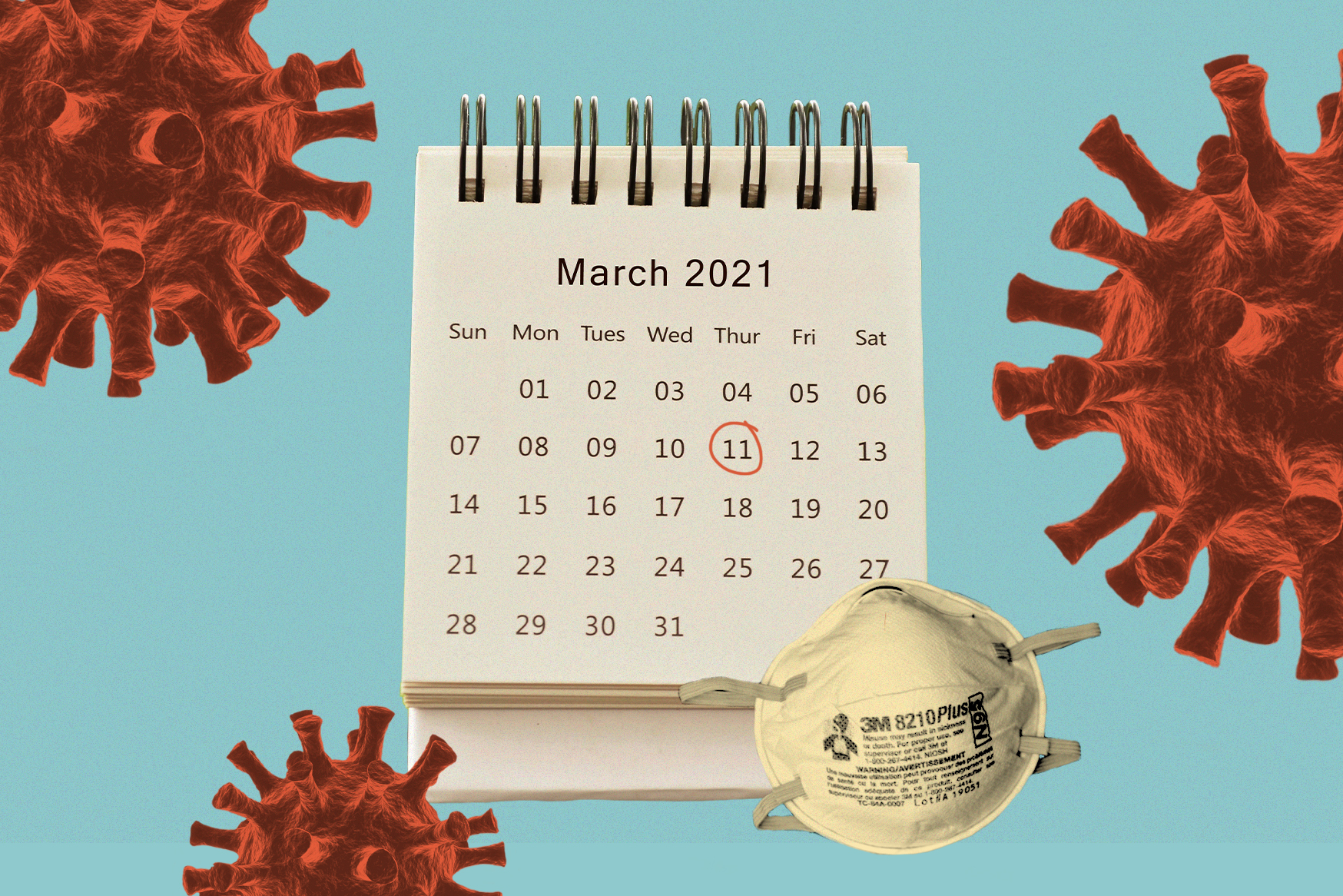

Click here to see all of PopSci’s COVID-19 coverage.
On March 11, 2020, the World Health Organization declared COVID-19, a disease caused by the newly-discovered coronavirus SARS-CoV-2, a pandemic. Two days later, then-president Donald Trump announced a state of national emergency and implemented a travel ban. At the time, the novel coronavirus had supposedly sickened just 1,000 Americans—a figure we soon realized was artificially deflated by inadequate testing and a lack of awareness of asymptomatic cases. We now know that people in the US had been dying of COVID-19 since early February of last year. But for many Americans, it was only a year ago that it became clear the virus posed a serious threat.
Things progressed quickly, with the Centers for Disease Control and Prevention advising against gatherings of more than 50 people on March 15—a measure the agency said would have to be in place for eight weeks, followed hours later by a suggestion to limit gatherings to 10 people. New York City closed down its schools and residents were urged to shelter at home. California issued a stay-at-home-order for the entire state. By March 26, the US had more than 80,000 confirmed COVID-19 infections and more than 1,000 deaths, which meant the country was the pandemic’s new hotspot.
We are now entering year two of this new world. And while questions about COVID-19 remain—how best to treat it, how much of a risk its variants pose, what other viruses like it we may contend with in the future—we know much more than we did during those early, frightening days. We may not know exactly when this pandemic will end, or what that end will look like, but we know that something closer to safety and normalcy is within our reach.
[Related: Can we ever hug again, how long will we keep wearing masks, and where are we most likely to catch COVID-19?]
But to achieve any level of even relative normalcy, we must carefully consider what aspects of the Before Times we can do without a little longer. The end of the pandemic probably won’t look like a single day when all of a sudden we can live without worry. Instead, we must slowly reevaluate what risks we take, which activities are becoming safer, and what measures we have in place to keep COVID-19 at bay.
To have a world where it’s truly risk-free to enjoy a meal on a restaurant patio, we may need to delay our return to indoor dining. To make it so that more people can see their friends in maskless settings, we may need to keep wearing face coverings on mass transit and in gyms. To have it be safe enough to hug a grandparent who lives in a nursing home, we may need to keep hugs with casual acquaintances on hiatus. It’s possible we’ll never greet one another by shaking hands again.
It is only natural, on the anniversary of a life-changing event, to want to look backward. You might consider how our world has shifted so rapidly in these 12 months by looking at these 12 photos that capture some of the most crucial moments in the pandemic. Or ponder the words that have become part of your everyday vocabulary, as evidenced by these Google search timelines.
But we at Popular Science are also looking forward to a new kind of normalcy. We’re looking forward to hugging one another—a ritual that, as this article explains, may never be as universal as it once was. We’re looking forward to seeing one another’s faces off a computer screen—even if we might have to wear masks for protection for months or years to come. And we’re, of course, looking forward to the day when we can lift weights, sing karaoke, and eat pizza together—realizing that we must keep sacrificing these activities until herd immunity is secure at some unknown point in time.
We have so much to look forward to. Now is not the time to stop avoiding risky behaviors. It is time for all of us—with hope, finally, in our hearts—to be as cautious as ever.
